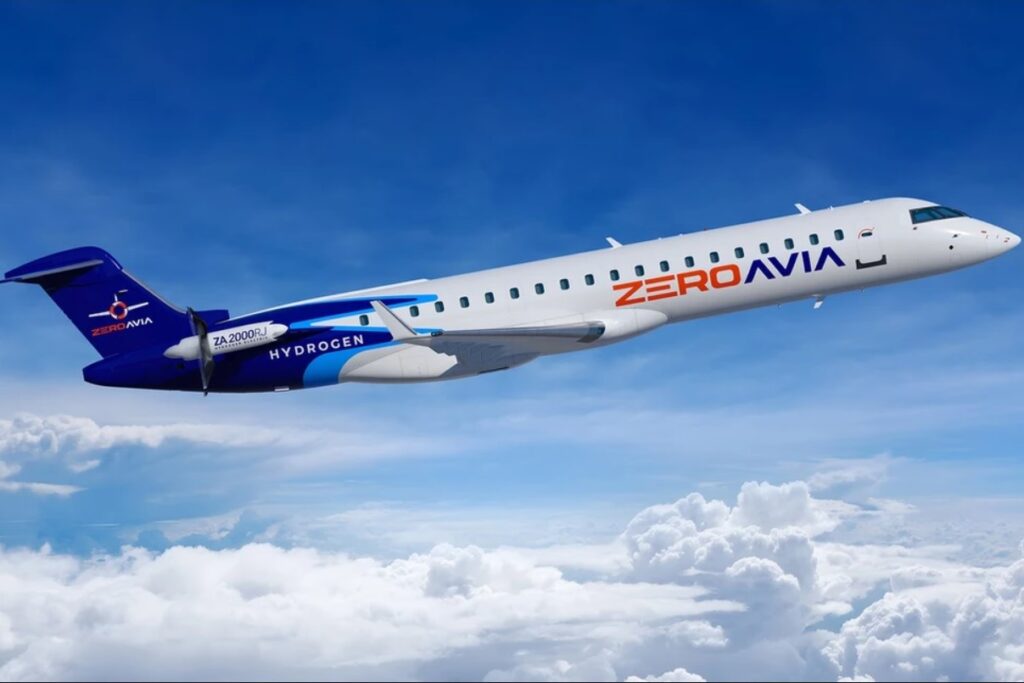Zero-emission aviation pioneer ZeroAvia and Type Certificate holder MHI RJ Aviation Group (MHIRJ) are now teaming up to develop new hydrogen-electric aircraft.
The collaboration could mark a breakthrough in the field of sustainability, particularly in the regional jet market as this hydrogen-electric propulsion system would result in truly emission-free engines.
“There is some payload and range compromise, but this technical study confirms a viable propulsion architecture and integration which could be utterly transformational. Before the end of the decade airlines could be flying zero-emission jets,” said Val Miftakhov, CEO of ZeroAvia in a statement.
Research showed that conventional engines in the Bombardier CRJ 700 jet are replaceable with ZeroAvia’s ZA 2000RJ powertrain. They may also be compatible with other aircraft in the CRJ family, including the CRJ 550 and 900.
Overall, there are more than 1,400 CRJ series aircraft in-service that could potentially be converted to fly with the ZA2000 engine. This hydrogen-electric CRJ aircraft could fly up to 60 passengers as far as 560 nautical miles, covering most of the current routes.
The study presents opportunities for integrating onboard hydrogen fuel storage and powertrain, thereby retaining the aircraft’s aerodynamics. Moreover, the adoption of hydrogen fuel promises a reduction in operating costs due to lower fuel and maintenance expenses.
Though the technical assessment has flagged the potential loss of turbine core thrust, this can be addressed by increasing the fan diameter and implementing innovative propulsor technologies.
ZeroAvia intends to enhance the specific power of its High Temperature Polymer Electrolyte Membrane (HTPEM) fuel cell system, thereby augmenting the operational characteristics of the envisioned hydrogen-electric CRJ aircraft.
At present, ZeroAvia is undergoing final tests on the prototype ZA2000 hydrogen-electric system for up to 80 seat regional turboprop aircraft. The goal is to secure certification for this system by 2027.

